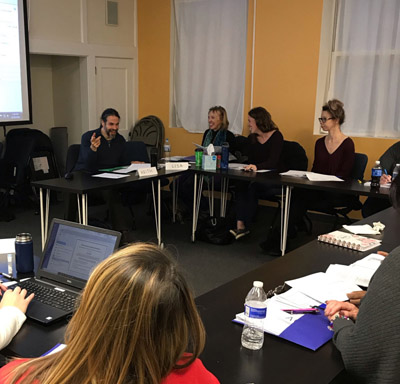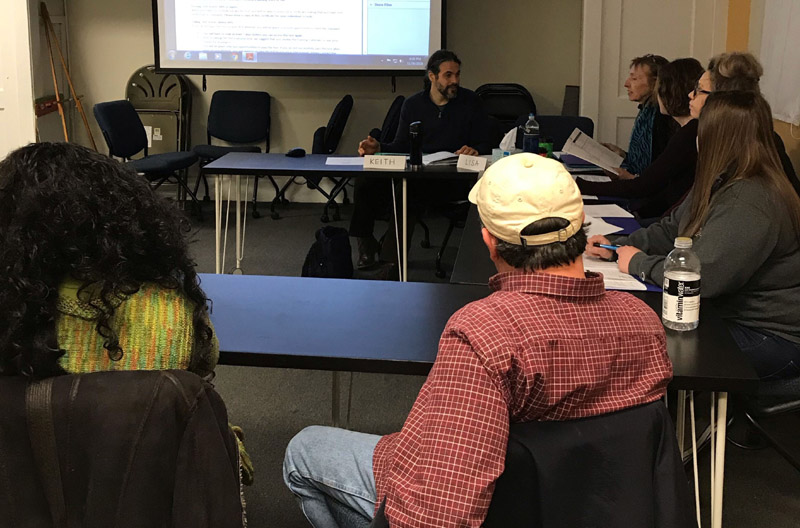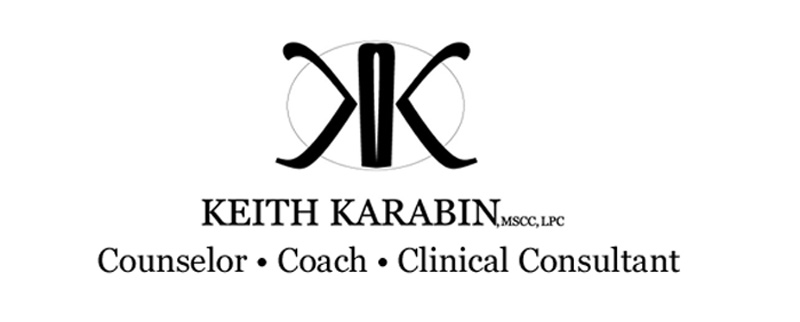Chuck Your Resolutions!

“I hope that in this year to come, you make mistakes. Because if you are making mistakes, then you are making new things, trying new things, learning, living, pushing yourself, changing yourself, changing your world. You’re doing things you’ve never done before…”
– Neil Gaiman, Author and Mistake Maker
Key: Successful change is finding a happier and healthier way to achieve the same function in a positive, strength-focused, measurable way.
Living It: Make a New Year’s Resolution destined to succeed!
Clinical Concept: Self-applied Functional Behavior Analysis and Positive Behavior Support Planning
Let’s check in. How are we all doing with our New Year’s Resolutions?
A rousing congrats and “great work!” for all of us with smiles on our faces and pats on our back. Feel free to jump out of this article now, if you like. This article is for those of us struggling with our resolutions.
I say we chuck ‘em if they’re not working. It just brings frustration, self-doubt or worse.
What, surprised that I’d say ditch our resolutions? Well, I didn’t say to give up on self-improvement. We just change the resolution to better fit our solution. I have nearly 25 years’ experience doing this very thing, plus, at the end of 2018 I taught a two-day Bureau of Autism Services Functional Behavior Assessment training, and essentially, finding solutions to challenging behavior is what it’s all about.

I added some pictures from the training so you could see that it was a chill, fun time with 12 brilliant people, but every one of them would also say that it was a hard couple of days. Assessing behavior and shaping a goal is a mentally taxing endeavor that sometimes takes weeks, yet we rattle off the first goal that comes into our head right after the ball drops and hope for the best. Maybe we participate in those promotional free months at the gym or the weight loss clinic then…
That lack of success may be due to how our resolution is shaped. While I won’t be directly quoting from the training, as I don’t want to share Bureau material without written permission, I can share tools that will help us examine our resolution to see if it fits the most prevalent behavior change system in America, possibly the world. With over a century of data from 1913 with John B. Watson’s “Psychology as the Behaviorist Views it,” through B.F. Skinner’s work in 1938 and onward, to today’s well established system, behavior analysis has strived to answer the question that has plagued humanity since the first shrug and “I don’t know” answer: “Why do we do what we do?” (Aubrey Daniels Institute, 2017). *
And of course, the logical follow up, “How do we knock it
off?!”
Find the Function
That’s step one. The child (or, okay, adult, too) who says “I don’t know why I keep doing that” may actually be telling the truth, but there is a reason. All behavior serves a function. It does something for us. That function may not make sense based on the behavior, but it does something. There are ways to find out. In dealing with New Year’s Resolutions, we hopefully are a step ahead, since we’re trying to change ourselves and have some insight.

Think about how we feel, or what we’re doing right before the behavior we’re trying to change, then what happens right after we do the behavior. The clues are right there. Some examples:
“I came home from work and I was so stressed! Before I knew it, I had half the bag of Oreos in my mouth and I still had my coat on!”
“I don’t know, I just hate doing the dishes. Or I get distracted. So, they pile up and eventually my wife does them. Yeah, she hates doing the dishes, too and she gets mad, but, hey ‘dishes: done.’”
Person One set the Resolution to lose weight but eating serves a stress-relief function. They could find healthier food to de-stress with or find a different method.
Person Two set the Resolution to do the dishes more often, but their delay leads to the removal of the task, which is nice. They could work out a system where they do the dishes after certain meals or on certain days and their spouse does it the other days. Then, with the spouse on board to let the pile build, the resolution commences, and change can happen.
Strong and Positive
Here’s one that dooms us from the beginning.
“I resolve to not be such a push over!” Says the person who is more naturally inclined to be a peacemaker, which can lead to taking on too many tasks but is very wonderful in relationships and with their family.
“I resolve to freak out on my kids less!” Says the person who is very detail oriented and deadline driven, which is great at work but leads to “freak outs” with their more laid-back family.
Our Resolution should be based in our strengths and pointed toward what we’re trying to achieve, not the negative behavior. No one ever got to a destination by walking backward, focused on where they started.
Person One could say “I resolve to only take on the jobs I can handle or feel strongly about.” This will involve some frank conversations with their supervisor or co-workers but is much more achievable.
Person Two could say “I resolve to set up a more flexible weekend schedule with my family” and then make sure that it has plenty of wiggle room in the timing so that they don’t feel as hurried. Or set up a list rather than a schedule and then the clock can be forgotten.
Measurable and Measured
Want to know what slows a room of degreed professionals? Making measurable goals with incremental milestones. The best analyst in the world must slow down and ensure that the goal set can be measured and has smaller steps embedded in it. Why? Because we don’t change overnight! No matter if it’s January First. Still, most New Year’s Resolutions are tripped up by this.
“I’m going to lose 20 pounds!” Great goal. It even has a number attached to it, which is better than the person above. But what is step one? Diet? Exercise? Buying a scale? Finding out if they even medically should lose 20 pounds? All valid questions which will leave a person feeling defeated if they get on the scale on January Eighth and see no change. But, if they break it down and say, “Week One: See my doctor, make a plan, buy a scale…Week Two: Follow plan…” then the Resolution is resolved in process.
“I’m going to watch less TV!” Awesome. You and me both. But then do what? And how much is “less?” Are we actively going to watch the clock during TV or set a timer? How do we know when we’ve made it? And really, what else are we going to do? “I’m going to read a book instead of watching TV twice a week!” Oh, cool. “I’m going to turn off the TV 20 minutes sooner to do yoga and meditate before bed!” You, go, guru.
Are we getting the vision now? I don’t know if B.F. Skinner ever thought his theories would be applied to picking salad or yoga over donuts or The Masked Singer, but the work of behavior analysis has always been about the same thing; building happier and healthier humans one behavior at a time. So, if your resolution has got you down, you have my permission to chuck it…and build a happier, healthier one. January’s not over yet.

__________________________________________________
Timeline of the History of Behavior Analysis. * (2017) The Aubrey Daniels Institute. Retrieved from: https://www.aubreydaniels.com/institute/museum/timeline
* Guys, I just gotta add that this timeline is an awesome tool that will have any behavior geek scrolling and clicking for at least 15 minutes.

 Previous Post
Previous Post Next Post
Next Post